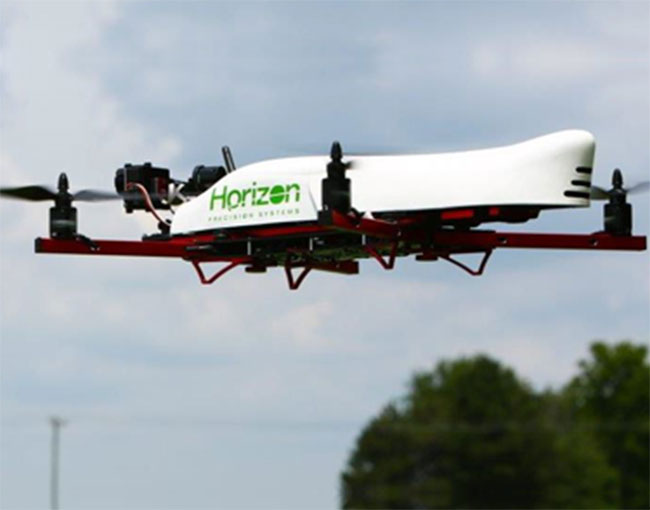Home > Insights > Publications > Small Business Committee holds hearing to explore commercial drone operations
On Wednesday, July 15, the House Committee on Small Business (the Committee) held a hearing, titled “Taking Flight: Small Business Utilization of Unmanned Aircraft,” aimed at exploring small business use of drones. The panelists highlighted some of the benefits of proposed drone rules but also expressed concern regarding continued progress and additional reforms needed to keep small businesses competitive.
Currently, commercial drone operations are prohibited without an exemption from the FAA pursuant to Section 333 of the 2012 Act. The hearing focused on the agency’s ongoing Notice of Proposed Rulemaking (NPRM) for small Unmanned Aircraft Systems (sUAS, or drones – those weighing less than 55 pounds) released earlier this year. Once those regulations are finalized, it is expected that small businesses will constitute most commercial drone operations. The Committee, led by Chairman Steve Chabot (R-OH), heard expert testimony from a panel of witnesses.
In his opening statement, Brian Wynne, President and CEO of the Association for Unmanned Vehicle Systems International (AUVSI) noted that the vast majority of granted Section 333 applications were for small businesses. He commented that drone operation and innovation is creating several new industries and also transforming how many existing ones function, citing as examples PrecisionHawk, a North Carolina-based startup helping farmers survey crops and insurance companies investigate claims, and Aerial Mob, a California cinematography company. Dr. Tim McLain, Professor of Mechanical Engineering and Director of the Center for Unmanned Aircraft Systems at Brigham Young University, added that large companies (such as Lockheed Martin, Boeing, Google, and Facebook) see the potential value of this technology and are acquiring successful small startups to jumpstart their own in-house programs.
The panelists qualified their enthusiasm with concerns about the Section 333 process’s onerous requirements (despite the recent blanket Certificate of Waiver or Authorization (COA) and summary grant changes to streamline Section 333). Mike Gilkey, CEO and Director of Flight Operations for 3D Aerial Solutions LLC, voiced concerns regarding the promulgation of numerous, and varying, state and local restrictions that have come about as a result of the FAA’s delays in establishing a federal regulatory framework. He admitted that even his business has and will continue to gravitate to states and localities that are less restrictive on his operations. Gilkey added that a year and a half passed between the time his business was ready to begin commercial drone operations and when it was actually able to obtain FAA authorization to do so. His blanket COA allows him to operate throughout the U.S., but he is still subject to significant other restrictions. Brian Streem, CEO and Founder of Aerobo, stated that, even with authorization, his company is constantly seeking individual approvals based on different client needs and described the process as “expensive, time-consuming and frustrating.” Securing a COA for a routine series of flights can take anywhere from hours to weeks.
The panel also addressed the importance of expanding the types of drone use permitted and said we need to allow for flights beyond-visual-line-of-sight, nighttime operations, and operations over heavily populated areas. McLain said that the new rules, if finalized, will allow him to conduct most of his desired operations more easily, but he expressed concern particularly about the FAA’s decision to retain visual-line-of-sight in its rules proposal. He said this restriction will make applications, such as surveying large farms, inspecting lengthy pipelines, or delivering packages, impossible. McLain also stressed that the timely promulgation of rules allowing beyond-line-of-sight operation is essential to the U.S. maintaining its competitiveness in the market.
Of particular note, the panel presented updated job and economic impact estimates for the UAS industry: 100,000 jobs created and $82 billion in economic impact forecasted over the next 10 years. If U.S. regulations lag or are too burdensome, many companies will continue to move their UAS research and testing to Canada and elsewhere where the legal frameworks are better established.
Additionally, in responding to questions about insurance for drones, Wynne said that products and coverage are developing and will continue to do so as the skies open up and underwriters get a better sense of the particular risks associated with different types of operations. Gilkey explained that his business recently insured its operations and said it was very expensive to do so. His sense is that many operators are going without coverage because the policies available are simply cost prohibitive.
Overall, while the FAA has made progress in the regulation of drones following the release of its NPRM, there is more room for improvement from a small business vantage point. Time, and safety, is of the essence.

